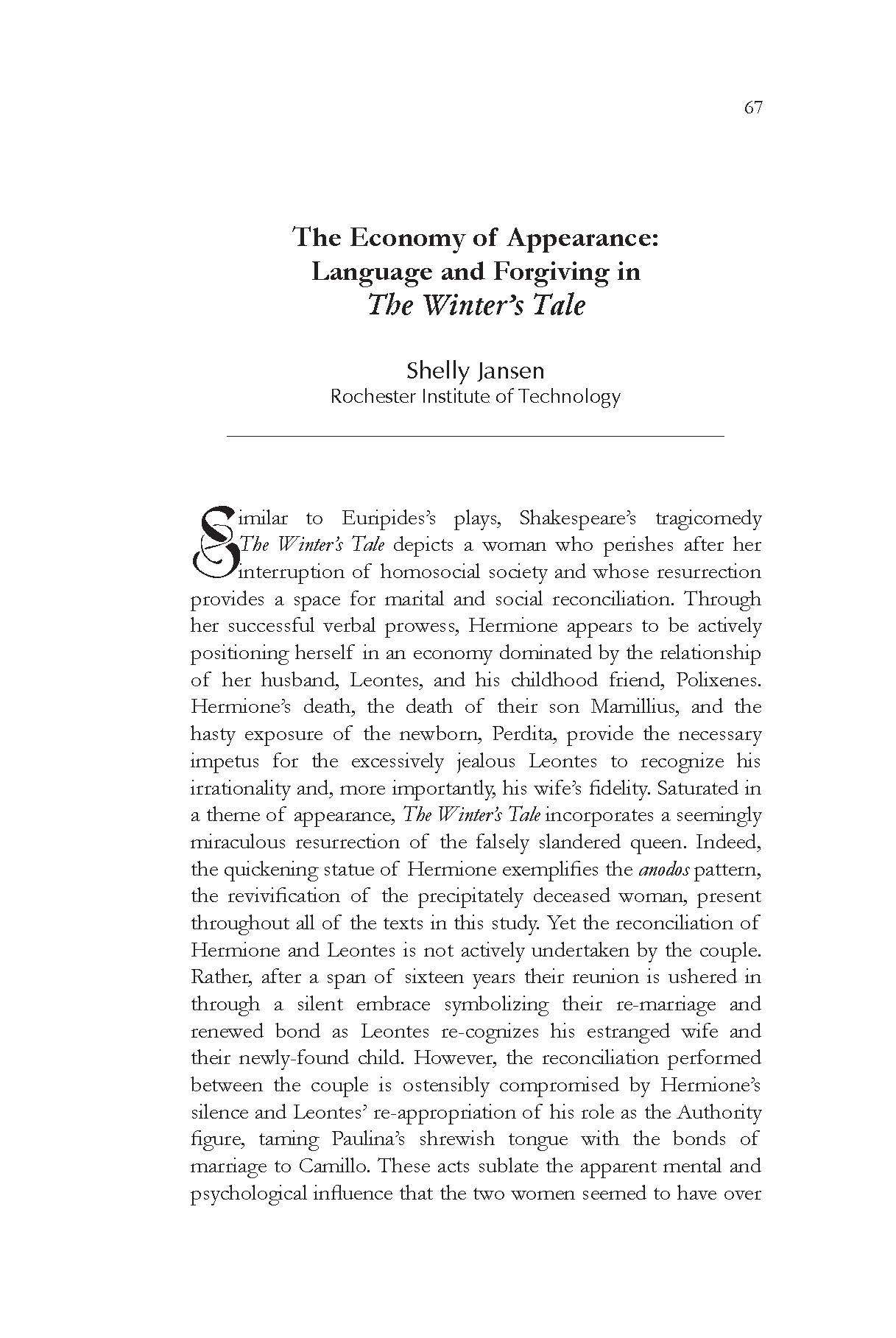The Economy of Appearance: Language and Forgiving in The Winter’s Tale
Main Article Content
Abstract
Similar to Euripides’s plays, Shakespeare’s tragicomedy The Winter’s Tale depicts a woman who perishes after her interruption of homosocial society and whose resurrection provides a space for marital and social reconciliation. Through her successful verbal prowess, Hermione appears to be actively positioning herself in an economy dominated by the relationship of her husband, Leontes, and his childhood friend, Polixenes. Hermione’s death, the death of their son Mamillius, and the hasty exposure of the newborn, Perdita, provide the necessary impetus for the excessively jealous Leontes to recognize his irrationality and, more importantly, his wife’s fidelity. Saturated in a theme of appearance, The Winter’s Tale incorporates a seemingly miraculous resurrection of the falsely slandered queen. Indeed, the quickening statue of Hermione exemplifies the anodos pattern, the revivification of the precipitately deceased woman, present throughout all of the texts in this study. Yet the reconciliation of Hermione and Leontes is not actively undertaken by the couple. Rather, after a span of sixteen years their reunion is ushered in through a silent embrace symbolizing their re-marriage and renewed bond as Leontes re-cognizes his estranged wife and their newly-found child. However, the reconciliation performed between the couple is ostensibly compromised by Hermione’s silence and Leontes’ re-appropriation of his role as the Authority figure, taming Paulina’s shrewish tongue with the bonds of marriage to Camillo. These acts sublate the apparent mental and psychological influence that the two women seemed to have over the penitent king, one through her silent absence and the other through her vociferous reproach. With Hermione restored to her wife par excellence status and Paulina also silenced, the old tale seems to have ended, set and staged to be told again.
